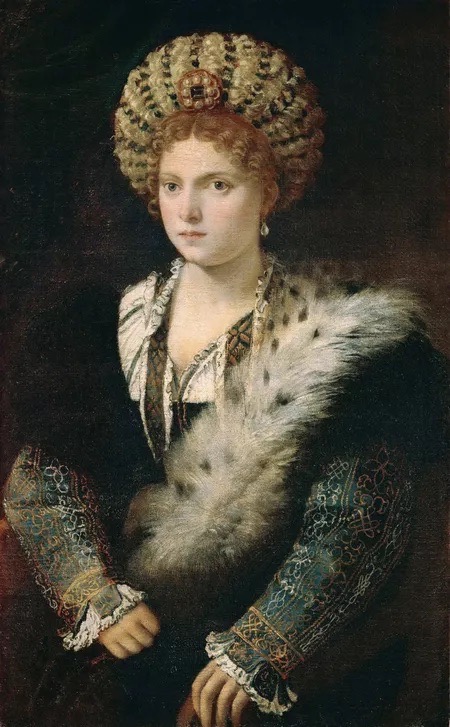Funny once ain’t enough: generative AI will not replace creatives
In the “The Moon’s a Harsh Mistress” someone explaining humour to a computer mentions that most jokes are “funny once”. Unoriginality is a deadly sin for wit, but that's true to an important degree for all creative work. If an image, advert, film or piece of music strikes you as unoriginal, it doesn’t matter how technically perfect it is, it’s boring. Boring creative work is worth less than zero.
Generative AI - text generators like ChatGPT and image generators like Midjourney - let anyone produce work that resembles the work done by creatives. Many people infer from this that soon creative workers will be out of a job. But they’re missing the lesson of ‘funny once’: originality and taste are mostly what they're paid for, and generative AI can't provide either.
Being able to draw doesn't make you an artist
The importance of originality is a timeless phenomenon. Gustav Klimt graduated school as one of many talented neo-classical painters. But would you have known his name if he kept doing work like the below instead of 'The Kiss'?

Klimt stood out from a crowd of similarly technically gifted peers due to originality. Originality, unlike technique, by definition cannot be a commodity. That's why top artists with the ability to find fertile new forms simply hire and fire MFA grads with the techniques they need.
Pastiche becomes too cheap to meter
Better technology simply fast-forwards the dynamic of commodification of technique. Brian Eno was playing around with generative music back in the 90s and thought a fair bit about what technology meant for creativity. His take was:
by the time a whole technology exists for something it probably isn’t the most interesting thing to be doing
If there are six competing AI based Ableton-plugins to churn out the signature sound of a new genre, then they’re near worthless: it’s likely already time to pick another genre. The technology is self-defeating: because it makes it so easy, it floods the market, and devalues the output to the point it's not worth doing.
That people are already bored of, and actively call out as lame, ChatGPT forum responses and obvious ideas for AI art reminds me of the “10,000 bowls of oatmeal problem” coined by Kate Compton:
I can easily generate 10,000 bowls of plain oatmeal, with each oat being in a different position and different orientation, and mathematically speaking they will all be completely unique. But the user will likely just see a lot of oatmeal.
Midjourney and ChatGPT are great at producing art and text from prompts, but most peoples' prompts make it churn out work that's "unique" only in the unappealing sense above. Coming up with spicy new ideas is still the hard, and valuable, part.
The red queen is coming for the Airbnb aesthetic
I accept that originality is less vital in more commercial creative work, like graphic design or advertising jingles. But there’s still plenty of evidence it’s still highly prized! Consider that you have already been able to buy website designs for $29 for decades, but then you get a website that looks like everyone else’s, including some scam site set up in an hour or two. Companies still pay lots to hire real designers to take the time to discover a new look which makes visitors take notice.
Perhaps buying a tasteful, original look is perceived subconsciously as proof you’re a company successful enough, and invested enough in the long term, to pay for someone to do the work to invent it. A similar motivation to banks having giant empty lobbies in an expensive neighbourhoods to demonstrate they’ve enough capital to waste some.
In advertising, it’s only the original that even gets noticed. Further, viral ads and tweets are exponentially more valuable, and I'd suggest originality is necessary for virality.
Any successful style becomes copied and thus mediocre. The 'red queen effect' suggests that trends that have been here for a decade or so - industrial coffee-shops, flat design, blob people illustration - will feel cheap and uninspired over time. If you want to stand out vs the competition, Midjourney can't help you: you're either going to have to develop original, tasteful, ideas or pay someone else to, just like now.
Automating the easy part
It might be argued that generative-AI is a power tool which will allow the top creatives to do 10x more work and replace many of their peers, decimating the workforce. But generative AI doesn't appear to be a power-tool for originality: by its statistical nature, it’s good at ‘more of the same’.
As argued above, AI only further commodifies the already commodified, and out-sourceable, technique! From Amdahl’s law we can predict that if a creative’s output is still bottlenecked on originality, they’re not going to be able to scale up enough to replace ten less talented peers.
Will super-intelligent AI be dumb enough to work for free?
The above is not arguing nor relying on a belief that a future, human-level artificial intelligence wouldn't be able to play the game of originality at the level of human creatives, only that generative AI can’t. But at that point, the important question appears to switch from 'can AI take creative workers' jobs’ to ‘will AI want to do their jobs?’. Which sounds like a problem with a similar practical, and ethical, solution to the problem of managing people: true AIs would probably want something in return for their labour, both in resources and meaning.
Prediction
Due to the above, I predict the proportion of people working in commercial creative fields in 2 and 5 years' time as now will stay steady or increase vs today. Take my (internet) money if you don't agree.
Leave a comment via Github 💬